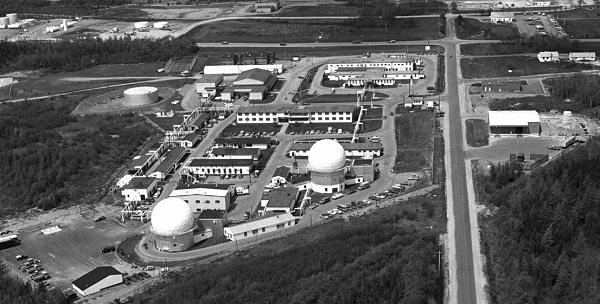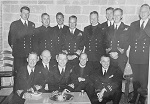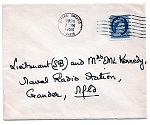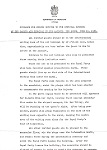|
HMCS GANDER
Naval Radio Station
Commissioned: May 1957 Paid off: July 10, 1966
During the Second World War, the Gander airport was placed under the control of the Royal Canadian Air Force (RCAF). The airportís size and location made it an extremely valuable asset in the war against Germany. Its location on the great circle route made it an ideal wartime refueling and maintenance depot for bombers en route overseas. Naval personnel were assigned the task of long distance radio communications, High Frequency/Direction Finder (HF/DF ) and monitoring the station's radar system. The small Royal Canadian Navy (RCN) contingent consisting of a leading telegraphist and several other ratings commenced an around the clock HF/DF operation in Gander. Next to code breaking and radar, HF/DF (known as "Huff Duff" to sailors) was probably the most effective allied technology facing the U-boats. The apparatus could take bearings on the high frequency radio transmitters employed by the German U-boats. When the U-boats reported home, whether it was weather, status reporting or convoy contact, the HF/DF could get bearings on the approximate position of the boat. Throughout the Second World War, Ganderís radio station provided much valuable military information including the identification and location of the German battleship Bismarck.
After the war, the Royal Canadian Navy continued to maintain an official interest in the site. Naval Radio Station (NRS) Gander was formally established by the Royal Canadian Navy in 1949 when Newfoundland joined Confederation. The station was commissioned in May 1957 and throughout the 1950s and early 1960, NRS Gander remained a small HF/DF station, reaching a maximum complement of 30 personnel in l962. In July 1966 in preparation of the unification of the Canadian Forces, the station's name changed to Canadian Forces Station (CFS) Gander. In 1977, Gander, the radio station, became 770 Communications Squadron when command of Gander switched from Communications to Air Command. In the summer of 1980, it once again returned to its naval roots with the formation of a sea-going team within the Squadron, tasked to support the Commander of Maritime Command. In 1984, Gander became a base so its name changed again from CFS to Canadian Forces Base (CFB). It is home to air/marine search and rescue operations that cover a vast swath of the western North Atlantic and southern Arctic. Its primary lodger unit is 9 Wing.
(LK64) Wardroom function after the annual inspection of the base by Commodore Plomer and party. Commodore Plomer (right); Commander Art Hewitt (centre), unknown US Navy Lieutenant (left) (LK65) Wardroom function after the annual inspection of the base - Sep 1958. Back row: VAdm Harry DeWolf (4th from left); Cdr Hewitt (2nd from right); Cmdre James Plomer (1st on right). Front row: Lt. Lionel Kennedy (host) (centre) Others unidentified. (LK66-LK67) Letter of thanks to Lt Kennedy from Cmdre Plomer after his inspection of NRS Gander
(LK68) Invitation and instruction card for the Royal Visit of HRH Queen Elizabeth II for the official opening of the Gander airport 19 Jun 1959 (LK69) Guidance for guests invited to the official opening of the Gander airport terminal by HRH Queen Elizabeth II From the collection of LCdr Lionel Kennedy, RCN Courtesy of Barbara Holliday
|








